Chile Guaque Guatemala: The Essential Mild & Flavorful Guatemalan Chili
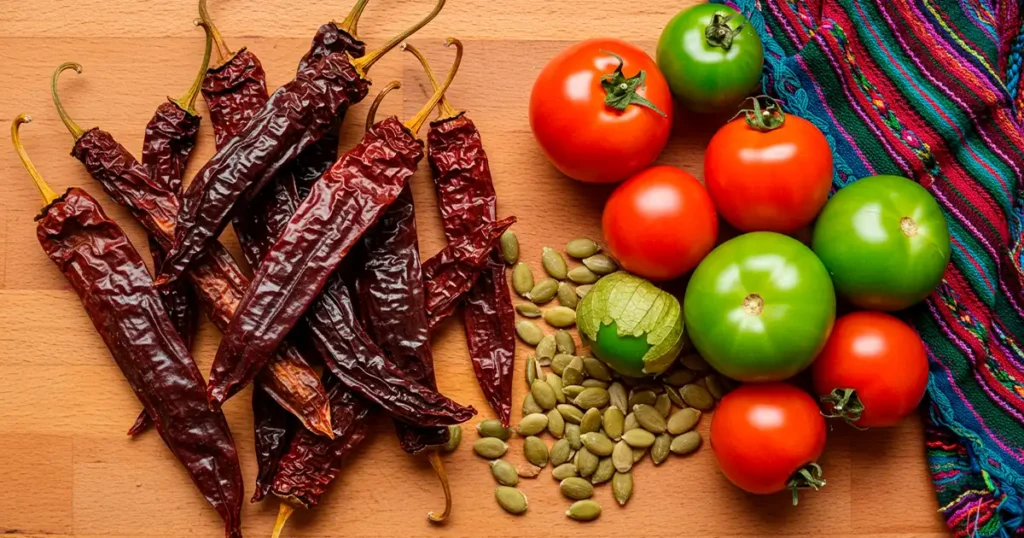
Guatemalan cuisine, a vibrant tapestry woven with Mayan traditions and Spanish colonial influences, boasts a rich palette of flavors. Central to this culinary heritage are its chilies, each contributing a unique character to the nation's beloved dishes.
Among these, the Chile Guaque (Capsicum annuum) stands out as a ubiquitous and indispensable ingredient, cherished for its mild, approachable heat, complex flavor profile, and its remarkable ability to impart a deep, alluring color to countless traditional preparations. Join us as we delve into the world of the Chile Guaque, a chili that is truly the soulful essence of Guatemalan kitchens.
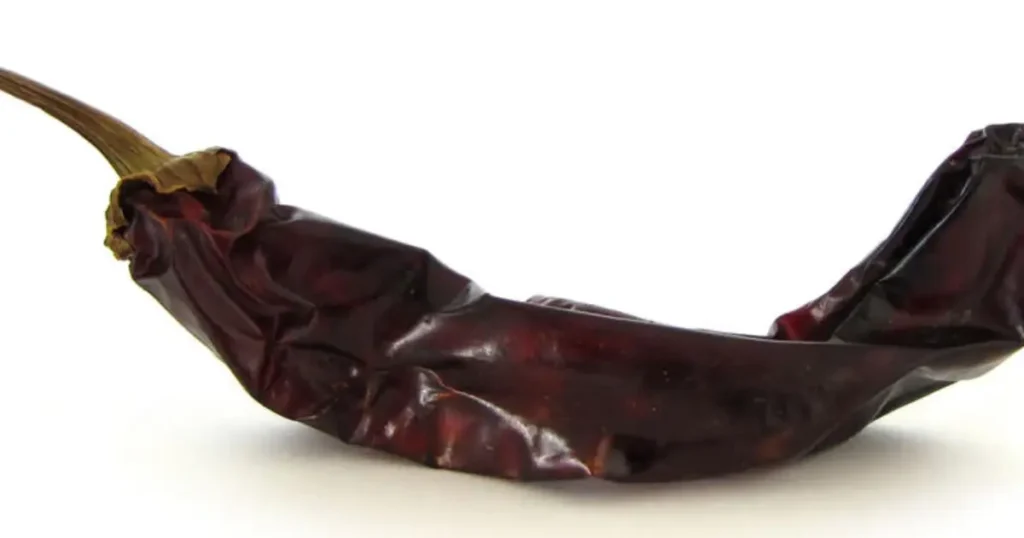
What is Chile Guaque? Understanding a Culinary Workhorse
The Chile Guaque, also commonly known by its Mexican counterpart's name, Guajillo, is a dried form of the Mirasol chili pepper. The name "Guaque" (sometimes spelled "Huaque") is the term primarily used in Guatemala. These chilies are long, typically ranging from 3 to 5 inches in length, and relatively narrow, with a smooth, often leathery, dark reddish-brown skin. The drying process is crucial, as it concentrates the flavors and sugars within the pepper, transforming it from its fresh state into the culinary staple prized across the country.
Unlike some of its fiery cousins, the Chile Guaque is celebrated more for its flavor contributions and coloring properties than for intense spiciness. It is a cornerstone ingredient, particularly in "recados" – the complex, flavorful sauces and spice pastes that form the heart of many Guatemalan stews, soups, and marinades. Its versatility makes it a true workhorse in the Guatemalan kitchen, consistently delivering depth and character to a wide array of dishes.
The Flavor Profile and Scoville Scale: A Gentle Warmth with Rich Undertones
The Chile Guaque offers a complex and nuanced flavor profile that is both distinctive and highly adaptable. Key tasting notes often include:
- Fruity and Tangy: Many describe a bright, tangy, and somewhat fruity quality, reminiscent of berries or even a hint of green tea.
- Earthy and Slightly Smoky: Underlying the fruitiness are earthy tones, and while not inherently smoked like a Chile Cobanero, the drying process can sometimes impart very subtle smoky notes, or these can be enhanced by toasting the chilies before use.
- Mild Sweetness: There's a gentle sweetness that balances its other flavor components.
- Subtle Herbaceous Notes: Some also detect delicate herbaceous or pine-like undertones.
In terms of heat, the Chile Guaque is considered mild to moderately pungent. On the Scoville Heat Unit (SHU) scale, it typically measures between 2,500 and 5,000 SHU. This places it in a similar range to a milder jalapeño pepper. This level of heat makes it incredibly versatile, allowing it to impart significant flavor and color without overwhelming other ingredients, a characteristic highly valued in Guatemalan cuisine which often prioritizes depth of flavor over searing heat.
The Indispensable Role of Chile Guaque in Guatemalan Cuisine
The Chile Guaque is not merely an ingredient; it's a fundamental building block in a vast number of iconic Guatemalan dishes. Its ability to provide a rich, reddish hue and a complex, savory base makes it essential.
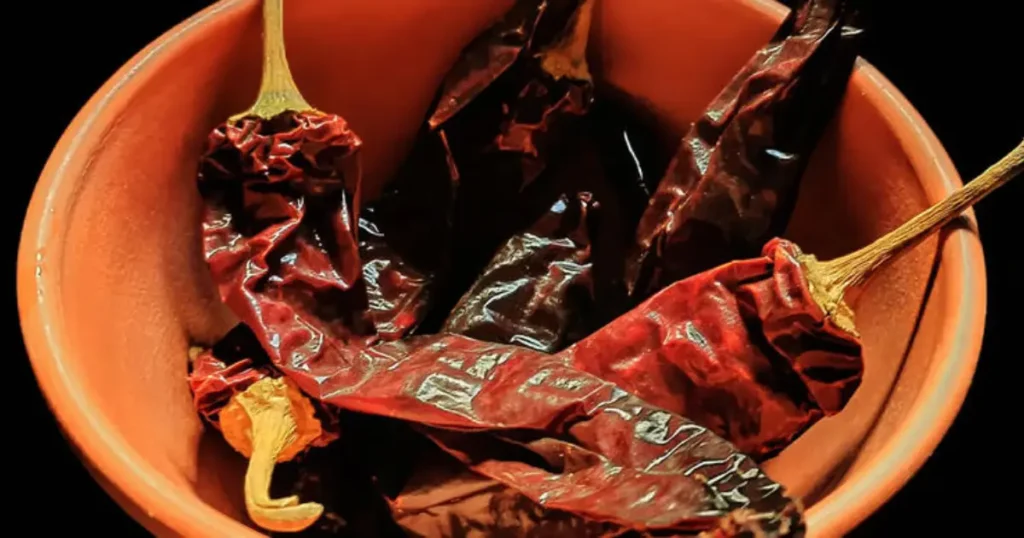
Recados: The Heartbeat of Guatemalan Stews
"Recados" are the soul of many traditional Guatemalan dishes. These are not simply sauces added at the end but are intricate blends of chilies, tomatoes, tomatillos, seeds (like pumpkin and sesame), herbs, and spices that are toasted, charred, and ground to create a thick, aromatic paste. This paste then forms the flavor foundation for stews and other preparations. Chile Guaque is a star player in numerous recados:
- Pepián: Often cited as Guatemala's national dish, Pepián is a rich, hearty stew that beautifully showcases the Chile Guaque. Whether it's Pepián Rojo (Red Pepián) or Pepián Negro (Black Pepián, which uses charred ingredients), the Guaque contributes its characteristic color and a significant layer of its fruity, earthy flavor. It is typically blended with other chilies like Chile Pasa, roasted tomatoes, tomatillos, garlic, onions, and toasted seeds.
- Jocón: While Jocón is primarily a green sauce based on cilantro, tomatillos, and green peppers, some regional variations or family recipes might incorporate a touch of Chile Guaque for added depth or a slight reddish undertone, though it's less prominent here than in red recados.
- Suban-ik: This traditional "pot stew" often cooked in mashan leaves for special occasions, features a complex recado where Chile Guaque plays a vital role alongside other chilies and spices, flavoring a mix of meats.
- Kak'ik: Though the smoky Chile Cobanero is a hallmark of this traditional Q'eqchi' Maya turkey stew, Chile Guaque is often included in the blend of chilies that create its rich, flavorful, and distinctly colored broth.
Salsas and Tamales: Flavor and Color Perfected
Beyond the elaborate recados, Chile Guaque is a key ingredient in everyday salsas and the iconic Guatemalan tamales:
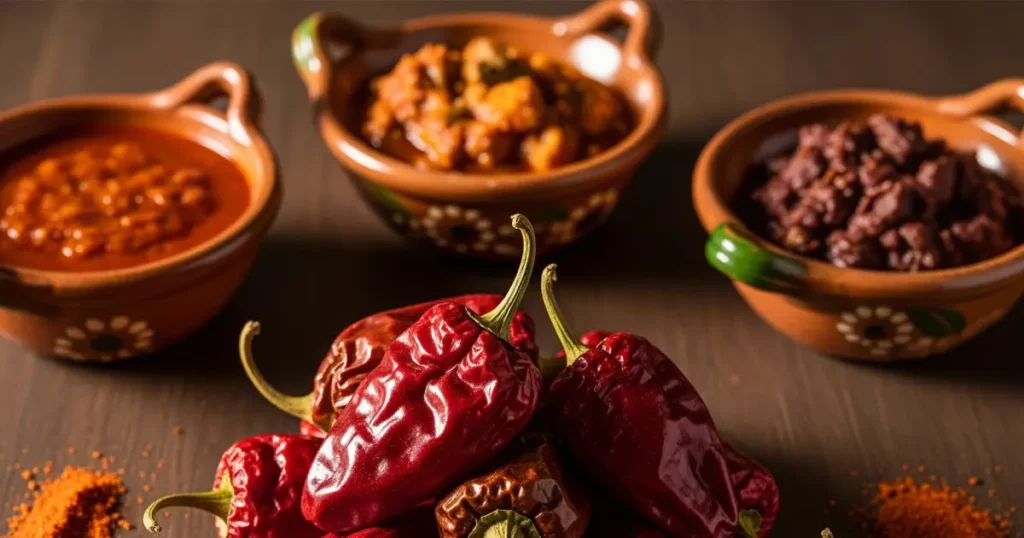
- Salsas de Mesa (Table Salsas): Roasted or rehydrated Chile Guaque peppers are blended with tomatoes, onions, garlic, and cilantro to create vibrant red salsas that accompany a wide range of meals, from grilled meats to eggs and tortillas. These salsas benefit from the Guaque's mild heat and deep flavor.
- Tamal Colorado (Red Tamales): Guatemalan tamales are a culinary masterpiece, and the "Tamal Colorado" owes its characteristic red color and a significant part of its savory flavor to the Chile Guaque. The chili is integral to the "recado rojo" that is mixed with the masa (corn dough) or used as a filling component along with meat.
- Chirmol: This is a classic Guatemalan roasted tomato salsa where charred tomatoes, onions, garlic, and chilies are mashed together. Chile Guaque is a frequent choice for this salsa, lending its signature taste and color.
Adobos and Other Preparations
The versatility of Chile Guaque extends to:
- Adobos (Marinades): Its flavor profile makes it an excellent base for marinades for chicken, pork, or beef before grilling, roasting, or stewing.
- Powdered Seasoning: While often used whole and rehydrated, ground Chile Guaque powder can be used as a seasoning to add color and a mild chili flavor to various dishes.
Cultivation and Preparation: From Field to Flavorful Paste
Chile Guaque, as the dried form of the Mirasol pepper, is cultivated in various regions of Guatemala, particularly in the central highlands and some areas of Sololá. The Mirasol pepper itself gets its name ("looking at the sun") because the peppers on the plant often grow upright, pointing towards the sky.
The chilies are harvested when mature and red. The traditional drying process, often by laying the chilies out on corrugated iron roofs in the sun, is crucial for developing their characteristic flavor and leathery texture. This age-old method preserves the peppers and concentrates their essence.
Preparing Chile Guaque for Cooking
To unlock the full flavor of dried Chile Guaque, a few preparation steps are typically followed:
- Wiping Clean: The dried chilies are first wiped clean with a damp cloth to remove any dust or debris.
- Removing Stems, Seeds, and Veins (Optional): The stems are always removed. For a milder flavor and smoother sauce, the chilies are often slit open, and the seeds and veins are discarded. The seeds can sometimes add bitterness, and the veins contain a higher concentration of capsaicin (the compound responsible for heat). However, for a bit more heat, some seeds might be left in.
- Toasting (Tatemado): This is a critical step for enhancing the flavor. The cleaned, de-stemmed (and often de-seeded) chilies are lightly toasted on a dry comal (a flat griddle) or skillet over medium heat for a short period, just until they become fragrant and slightly more pliable. Care must be taken not to burn them, as this will result in a bitter taste. Toasting awakens the essential oils and deepens the smoky, fruity notes.
- Rehydrating: After toasting, the chilies are typically rehydrated by soaking them in hot water for about 15-30 minutes, or until they are softened and plump. The soaking liquid itself can absorb some of the chili's flavor and color and is often used as part of the base for the sauce or recado.
- Blending: Once rehydrated, the softened chilies are ready to be blended with other ingredients – tomatoes, garlic, onions, spices – to create the desired sauce, recado, or marinade.
Chile Guaque vs. Other Chilies: Understanding the Differences
It's helpful to distinguish Chile Guaque from other common dried chilies:
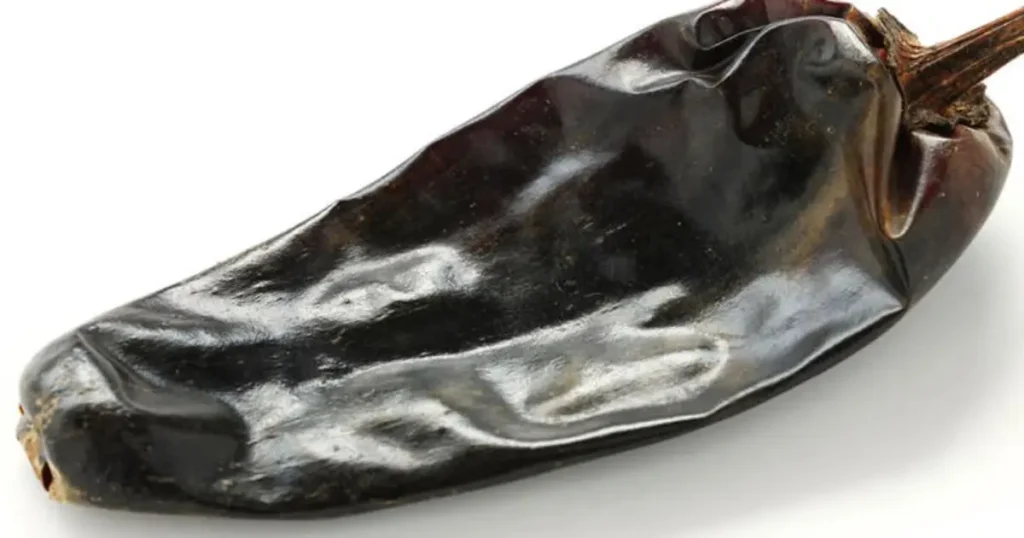
- Chile Pasilla: Often confused with Guaque/Guajillo, the Pasilla (dried Chilaca pepper) is generally darker (almost black), longer, and thinner. It has a more raisiny, rich, and often slightly more bitter flavor profile with mild to medium heat. In Guatemala, Chile Pasa is also a distinct and very important chili, frequently used alongside Guaque in dishes like Pepián. The key difference lies in the fresh pepper variety they originate from and their resulting distinct flavor notes.
- Chile Ancho: This is a dried Poblano pepper. Anchos are broader, heart-shaped, and have a sweeter, fruitier flavor with mild to medium heat. They are also a staple in Mexican cuisine and can be a good substitute if Guaque is unavailable.
- Chile Cobanero: As discussed previously, the Cobanero is a smaller, hotter, and distinctly smoked chili from Alta Verapaz, Guatemala. Its flavor profile is intensely smoky and significantly spicier than the Guaque. While both are crucial to Guatemalan cuisine, they serve different flavor purposes.
While sometimes used interchangeably with the term "Guajillo" (its Mexican name), within Guatemala, "Chile Guaque" is the recognized term for this specific dried chili that is so integral to the local gastronomy.
Finding and Storing Chile Guaque
In Guatemala, Chile Guaque is readily available in every local market ("mercado"), piled high in vibrant red mounds, and also packaged in supermarkets by brands like Especias Sasson. It's sold whole and dried, and sometimes in powdered form.
For those outside Guatemala, Chile Guaque (often labeled as Guajillo) can be found in Latin American grocery stores, specialty spice shops, and online. When purchasing, look for chilies that are pliable rather than overly brittle (which can indicate old age), with good, vibrant reddish-brown color and a pleasant aroma.
To store dried Chile Guaque, keep them in an airtight container in a cool, dark, and dry place. Properly stored, they can last for many months, though their flavor may gradually diminish over extended periods. If they become extremely hard, they can still be rehydrated, but their flavor might be less potent.
The Cultural Thread of Chile Guaque
The Chile Guaque is more than just a seasoning; it is a cultural touchstone. It represents the continuity of ancient culinary practices, adapted and refined through generations. Its presence in celebratory dishes like Pepián and tamales links it to family gatherings, festivals, and the everyday rituals of Guatemalan life.
The process of selecting chilies at the market, the careful toasting and rehydration, and the blending into complex recados are often skills passed down, embodying the heart of Guatemalan home cooking. It is a flavor that speaks of tradition, community, and the rich agricultural bounty of the land. The chili is emblematic of regions like San Andrés Itzapa, where it is a key ingredient in the local specialty known as "cherepe."
Embracing the Gentle Fire of Guatemala
The Chile Guaque, with its gentle warmth, rich fruity and earthy notes, and beautiful coloring capabilities, is an unsung hero of Guatemalan cuisine. It doesn't scream for attention with overwhelming heat; instead, it masterfully builds layers of flavor, creating the soulful depth that characterizes so many of the nation's most cherished dishes.
Whether you are exploring Guatemalan cooking for the first time or are a seasoned aficionado, understanding and appreciating the role of Chile Guaque is key to unlocking the authentic tastes of this vibrant culinary tradition. It’s an invitation to explore a world of flavor that is both comforting and complex, a true taste of Guatemala's heart.

Leave a Reply